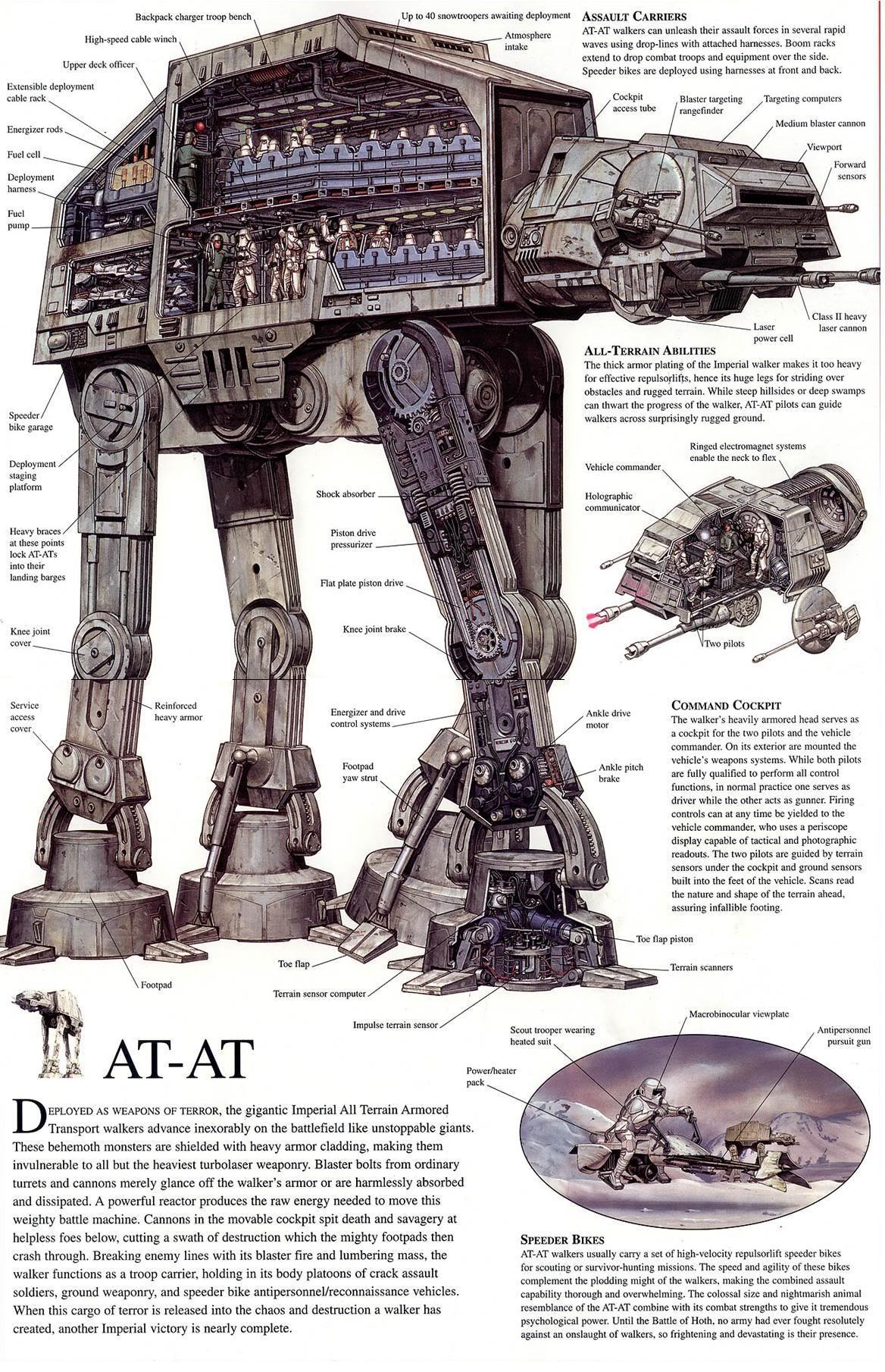If you’ve ever wondered how exactly stormtroopers disembark from the Empire’s intimidating AT-ATs (All Terrain Armored Transport), you’re not alone.
We’ve seen them stomping across the battlefield, striking fear into the hearts of rebels, but what about the logistics of getting troops on and off these behemoths?
Let’s get deeper into how troops leave the AT-AT and why its design, though cool, is also widely debated for its impracticality.
Inside the Beast: The Imposing Yet Impractical AT-AT

The AT-AT, introduced during The Empire Strikes Back in the Battle of Hoth, quickly became one of the most iconic symbols of the Galactic Empire’s military might.
Towering over the battlefield, these 22.5-meter-tall war machines were designed to strike fear into the enemy, projecting the Empire’s power.
However, while they are awe-inspiring, they aren’t without flaws, particularly in terms of practical combat deployment.
Inside, the AT-AT is just as complex as it is intimidating.
It can carry up to 40 stormtroopers, plus several speeder bikes, all ready to deploy from the rear of the walker.
The command head, located at the front, houses the pilot, gunner, and commander, who operate the walker’s impressive weaponry like dual chin-mounted heavy laser cannons and side-mounted blasters.
The troop compartment sits within the main body, providing space for soldiers to prepare for battle, with atmospheric exchangers and filtration systems ensuring comfortable living conditions during long operations.
But despite its impressive size and firepower, the AT-AT suffers from some clear design flaws. One of the biggest critiques revolves around troop deployment.
When it’s time for soldiers to disembark, they don’t have the luxury of a quick and seamless exit.
The walker moves slowly, and in combat, troops can either rappel down from cables or descend via a ramp after the AT-AT “kneels” to a height of about three meters.
This method leaves troops exposed to enemy fire, a serious disadvantage, especially since the AT-AT’s slow, deliberate movement alerts enemies long before it arrives.
Compared to faster, stealthier alternatives like the Republic gunship or other repulsorlift vehicles, the AT-AT seems inefficient.
Some fans have pointed out that the Empire, however, wasn’t concerned with practicality, their focus was on intimidation.
The AT-AT’s towering presence, slow march, and overwhelming firepower were all part of the Empire’s strategy to instill fear in their enemies, and in that regard, the AT-AT certainly succeeded.
Rappelling vs Kneeling
As mentioned above, for troopers to leave the AT-AT, they will have to choose between fast-roping from cables or having the walker kneel down to release troops via a ramp.
Therefore, one of the biggest debates surrounding the AT-AT is how troops should disembark, as both methods have their pros and cons.
Fast-roping from cables, similar to what we see in modern-day helicopters, can get troops on the ground relatively quickly.
However, this leaves them exposed to enemy fire, especially since the AT-AT itself moves slowly and can be heard from a distance.
Critics argue that this method doesn’t make much sense in a galaxy where faster, stealthier repulsorlift vehicles exist.
On the other hand, having the AT-AT “kneel” down and deploy troops via a ramp would be safer, but much slower.
Kneeling a massive machine like the AT-AT takes time and is impractical in the middle of a heated battle.
While it could work when securing a position or dropping off troops far from enemy lines, it’s not ideal for active combat situations
The AT-AT isn’t practical, but it sure is terrifying.

